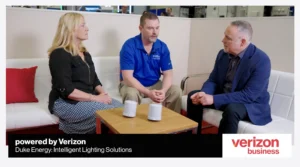Track to the Future: Cleaning and Mowing Strategies for Utility-Scale PV Solar Plants
G’day, mates, and greetings from Down Under. Michael Corio, Sales Leader, Australia for Array Technologies, joined moderator Travis Rose on Track to the Future to talk about cleaning and mowing strategies for PV solar plants and how these tasks fit into a long-term strategy to reduce operations and maintenance costs.
PV solar sites are different depending on locations and conditions, so moving and cleaning strategies differ. The main concerns for array site upkeep are mowing, maintaining the vegetation and cleaning.
“These things depend on a variety of factors,” Corio said. “Namely, the frequency of these activities; how often do you have to mow the solar farm. How often are you planning to clean? Is the solar farm in a remote location where it costs a lot of money to perform this work? And what kind of strategies do you develop? Because, remember, this is going to be a 30-year asset. It really requires planning to put together a cost-effective strategy.”
Corio said that cleaning doesn’t have to occur more than once or twice a year in most cases.
“As long as you get a decent rain and you’re able to deploy effective strategies, such as moving the tracking system to a more angled position at nighttime to take advantage of rain flows to clean panels, those kinds of things help in terms of minimizing the necessity of cleaning.”
But, for some locations where there is more dust, the panels might need to be cleaned every couple of months.
When it comes to maintaining solar farms, people want innovative solutions without using heavy equipment and risk breaking modules. Array Technologies’ DuraTrack’s centralized design is an optimal solution for today’s semi-automatic robotic cleaning processes.
“The fact that we link the rows is one of our biggest strengths when it comes to reducing maintenance costs for our customers,” Corio said.
An unlinked system requires additional motors, controls and batteries for every row. With Array technologies, the same size site using their centralized design system over a distributive design would decrease the electronic component requirements from multi-thousands down to hundreds.
Follow us on social media for the latest updates in B2B!
Twitter – @MarketScale
Facebook – facebook.com/marketscale
LinkedIn – linkedin.com/company/marketscale








